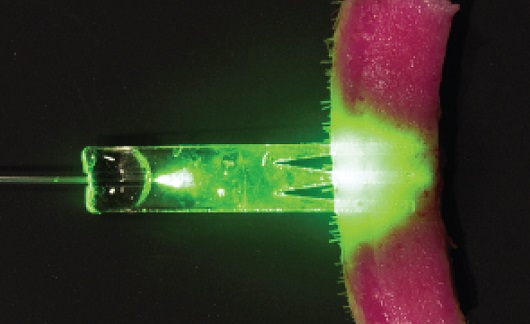Delivering light into human tissue may heal wounds faster
Researchers from the University of St Andrews and Harvard Medical School have developed a new fiber-optic technology capable of delivering light deeper into human tissue than ever before. The new method could help heal wounds faster and treat tumors more efficiently.

The researchers employed a process called photochemical tissue bonding, in which light is applied to a wound to stimulate healing. Until now this technique has only been used to treat topical wounds, but the researchers wanted to further develop the technology to repair tissue deep within the human body.
How they did it
The team found a way to make biodegradable optical fibers which can be inserted into the body to deliver light to heal internal wounds locally. The researchers offer the example of post surgical wounds.
While fiber-optic devices or catheters are typically designed from glass or plastic and remain in the body permanently or until removed via surgery, the St Andrews-Harvard team shows demonstrated that fibers could actually be made of materials that can be reabsorbed into the body, eliminating the need for removal and the risk of damaging the newly-repaired tissue.
“A variety of optical techniques, such as photochemical tissue bonding and photodynamic therapy, require efficient delivery of light deep into tissues, but the current limited penetration of light in tissue constitutes a serious constraint in clinical use,” said Professor Malte Gather, of the School of Physics and Astronomy at the University of St Andrews.
Instead of using light externally, the research could create the shift in optical component use for tissue integration, and offer the ability to precisely control the delivery and collection of light.
Their findings have the potential to allow doctors to “heal from within without scarring.”
Other potential applications include photodynamic therapy (PDT) for cancer treatment, as well as implanted endoscopy after surgery for repeated imaging and monitoring of the healing process.

Comments are closed, but trackbacks and pingbacks are open.